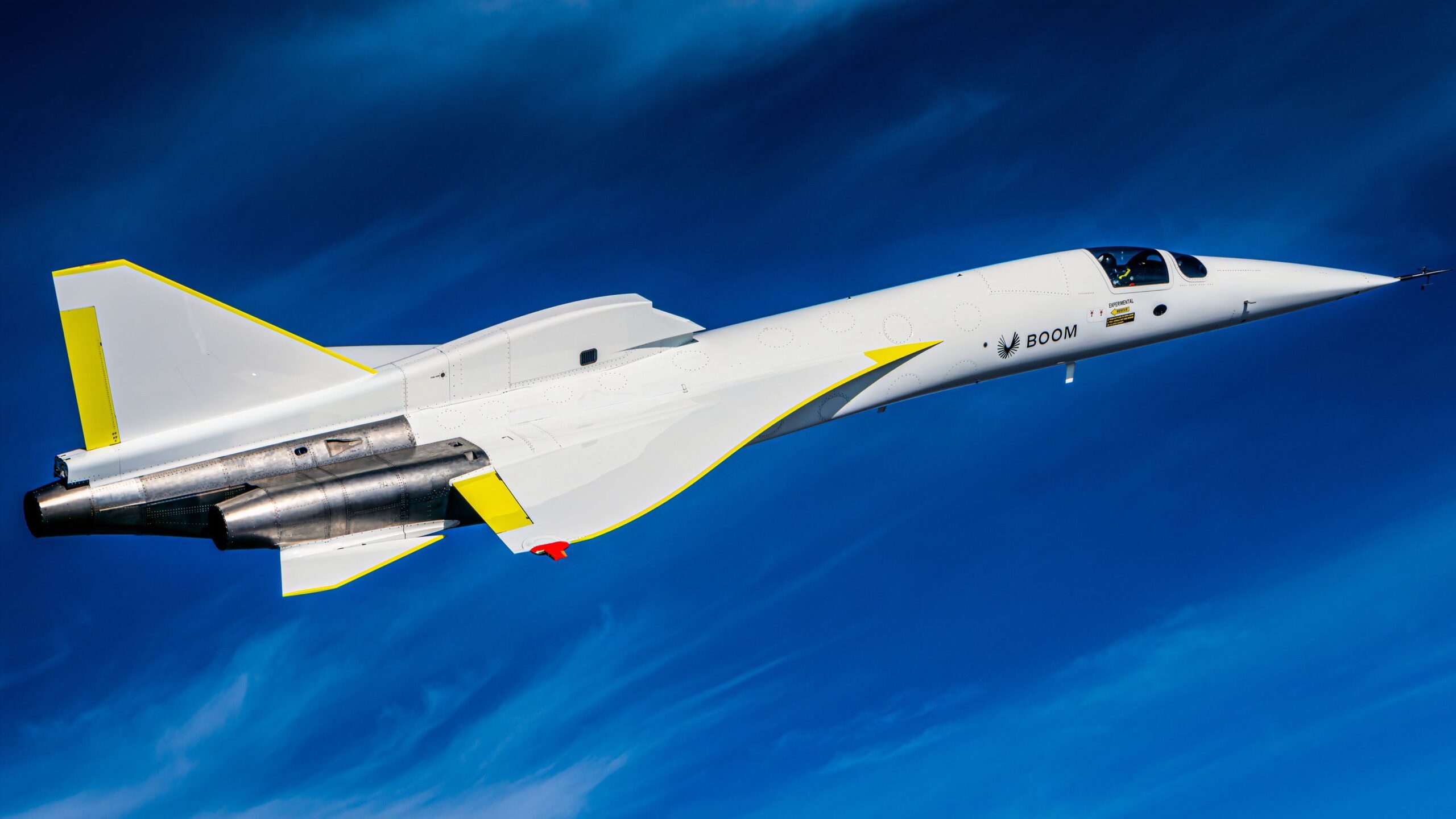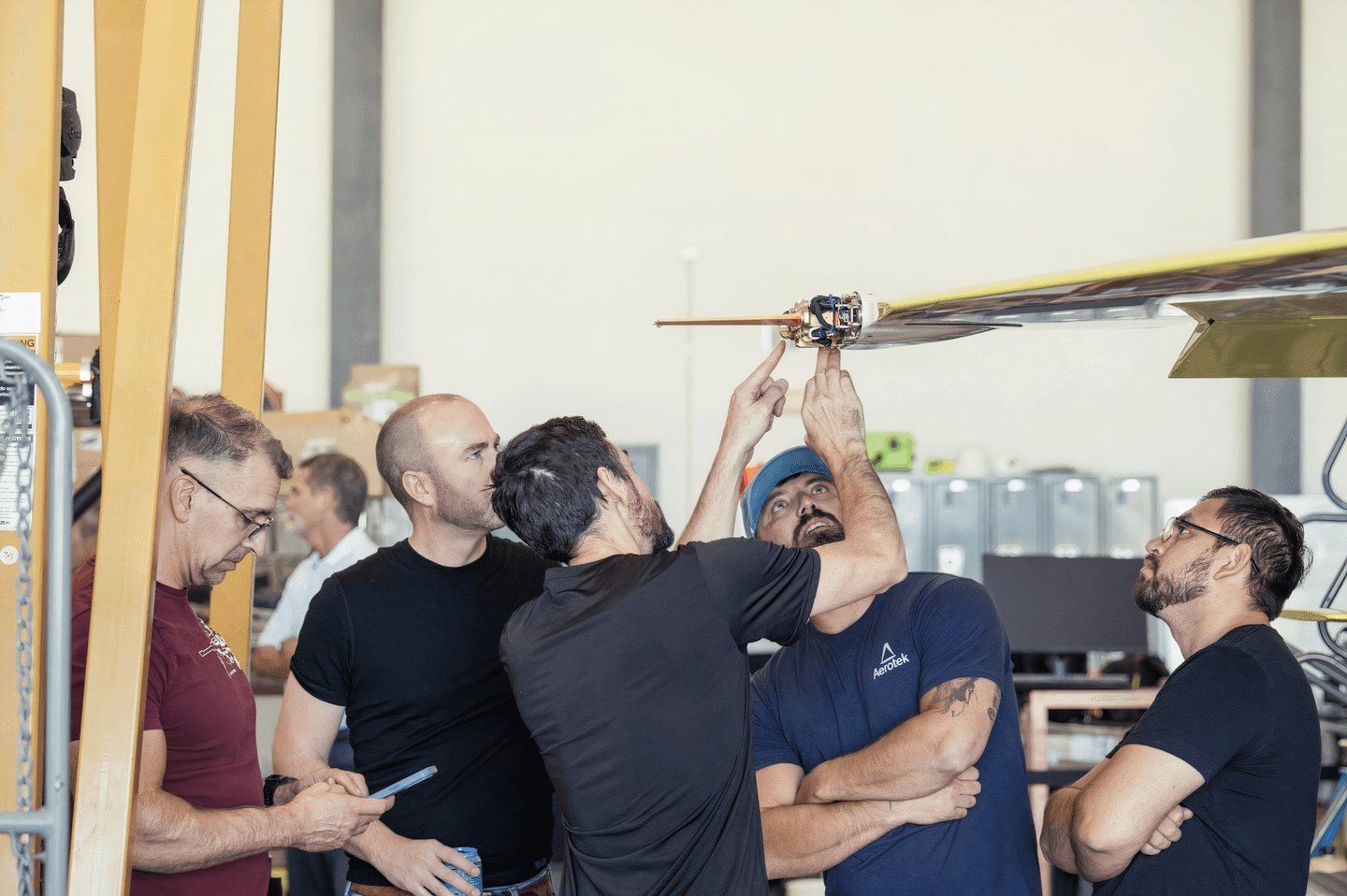Boom Supersonic
completed the fifth test flight with XB-1 on Monday from Boom Supersonic’s test base at Mojave Air & Space Port, California. Boom Supersonic’s proof of concept XB-1
may have been modest, reaching a maximum altitude of 17,800 feet with a total flight time of 50 minutes – but the flutter system was reinstalled and worked on this critical test flight.
What is flutter and why does flutter testing matter?
As the coverage of test flight four mentioned, Boom Supersonic has had problems getting the flutter excitation system (FES) to work and stress the XB-1 proof of concept aircraft to see how Boom’s XB-1 can handle flutter. Recently, Simple Flying published a guide to flutter:

Related
Aerodynamic Phenomenon: What Is Flutter In Aviation?
Flutter tests during the design and testing phases ensure the structural integrity of the aircraft.
Flutter is when an aircraft responds abnormally to the forces of lift, thrust, drag, and weight – and that response is oscillating movement like a bird’s flapping wings. As one will read in the guide, the aircraft has to be tested to handle expected vibrations so the aircraft is proven to have structural integrity through turbulence and such. One can see in the below photo the orange wingtip device that’s part of the FES:
Photo: Boom Supersonic
Additionally, in the cover photo one can see the orange FES on the XB-1 wingtips. CEO Blake Scholl did share with Simple Flying that the reason why Boom Supersonic built the XB-1 was ultimately as,
“We built this airplane to learn, to discover what we didn’t know, to discover what it really takes to build a civil supersonic airplane, one that’s safe enough to be flown by a human.”
Hence, the FES needs to be working, and the XB-1 performance must be gradually tested instead of just going to Mach 1 after a few test flights. Helpful that one of the purposes of XB-1 as previously covered is to test the same carbon fiber composite materials at high speed that will be used in Overture.
However, on the fifth test flight, XB-1 flew for other test points beyond flutter. Those test points included evaluating how XB-1 handled longer flight time, higher speed, and higher altitude.
Longer, faster, and higher on test flight five
XB-1’s fifth test flight had these successful statistics :
- The fifth flight lasted for 50 minutes instead of 48 minutes on test flight four and test flight three 32 minutes.
- Additionally, the fifth test flight reached Mach 0.69, or 428 knots, true airspeed (TAS), and 17,800 feet. Although not supersonic nor cruise altitude, it’s forward progress.
As per the above tweet, this is not as fast as a Boeing 737 MAX (Mach 0.785) or Airbus A321neo (Mach 0.78) – or even as high as 30,000 feet, which is where most jetliners cruise. But again, Boom Supersonic is going for ten test flights before going supersonic or past Mach 1 with XB-1.
Again, XB-1 is intended to be a proof of concept before Boom Supersonic starts building at least 130 Overture 1 aircraft on order. The goal is for Boom Supersonic to start fulfilling Overture
1 orders by 2030.
Bottom line: Continuing the “test, analyze, and review” cycle
Boom Supersonic recently released a YouTube video as to what goes on at Boom Supersonic between XB-1 test flights
. For instance, force feedback has been fine-tuned and the landing gear has been checked.
As you heard above, XB-1 Senior Manager of Aircraft Systems Erin Young – a former Textron Scorpion jet flight controls engineer and NASA New Horizons Mission intern, among other professional accomplishments – stressed the need for a “test, analyze, and review cycle” to keep the XB-1 proceeding safely toward supersonic flight. Ultimately, the XB-1 proof of concept program is proceeding steadily.

